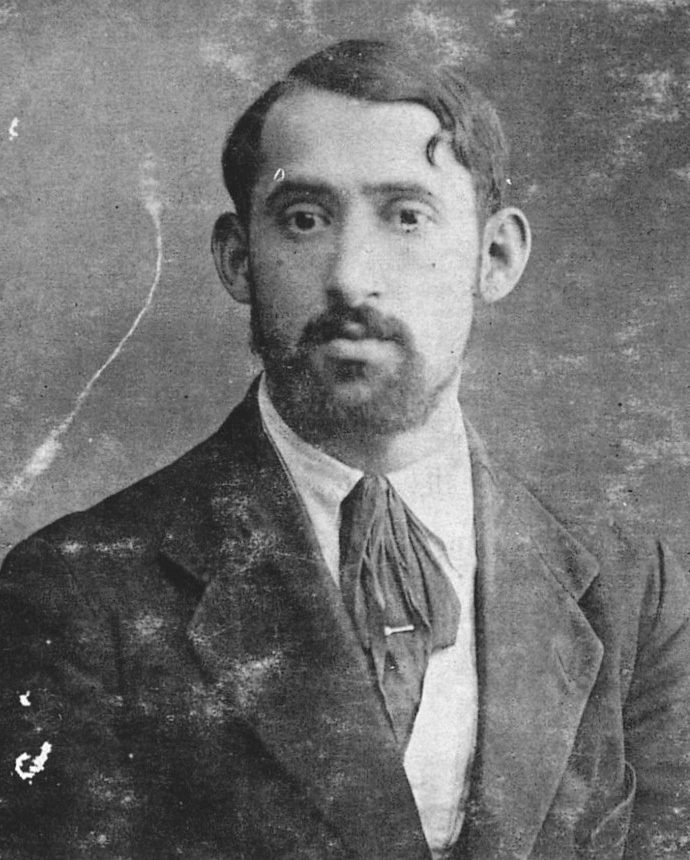Félicia PACANOWSKA
January 3, 2019Jules PASCIN
January 3, 2019Isaac PAÏLES
KIEV 1895 – PARIS 1978
Isaac Pailes grew up in a family of goldsmiths. His maternal grandfather was a wood engraver. At the age of thirteen, Isaac took an interest in engraving and in sculpture. His first sculptures are in the museum in Kiev. In 1910, he enrolled in the School of Fine Arts in Kiev, where he met Issachar Ryback and Max Kaganovitch, who became his dealer forty years later. With his father’s help, Isaac Pailes arrived in Paris in 1913. He shared a room with Mané- Katz and studied sculpture for a year at the Ecole des Beaux-Arts in Paris.
In 1914, he decided to return to Kiev. He went to the Russian embassy, stole money from a drawer and got to Russia via London, Norway, Sweden, and Finland. When the Revolution broke out in Russia, he was sent to serve on the Crimean front. As he refused to keep fighting, he escaped and embarked on a ship without any papers or ticket. In exchange for a gold ring, the captain dropped him off in Constantinople. Pailes’ dream was to return to Paris. He went aboard a boat again and pretended to be a sailor to get to France. He arrived in Paris in 1919 and went straight to the café La Rotonde, where he met his friends Michel Kikoine and Isaac Dobrinsky. The latter welcomed him in his home and gave him clothes. Initially, he worked as a model in order to earn his living. In 1920, he gave up sculpture for painting and started to collect tribal art. He then got in touch with the art lovers of the time: police chief Zamaron and dealers Paquereau and Georges Bernheim. He was attached to his Slav origins, and participated in the activities of the Russian Artists Society, which was set up by Russian artists in Montparnasse and presided by Wildhopff.
When World War II broke out, Pailes settled in the Pyrénées-Orientales and later in the Auvergne region. He then joined a group of Resistance fighters in Rochefort. As he was called to enlist in the Service du Travail Obligatoire (compulsory work service) in Germany, he hid in an attic for eleven months. Following the Liberation, he returned to his studio in Montparnasse and continued to paint. In 1948, Isaac Pailes produced his first abstract works.
Stories of Jewish Artists of the School of Paris 1905-1939
FRENCH-ENGLISH
Capitale des arts, le Paris des années 1905-1939 attire les artistes du monde entier. De cette période de foisonnement, un terme est resté, celui d'Ecole de Paris, qui recouvre une grande diversité d'expression artistique. Dans ce brassage dont Montparnasse est le creuset, un groupe se distingue : celui des artistes juifs venus de Russie, de Pologne et d'Europe centrale. Si leurs styles sont variés, un destin commun les rassemble : ils fuient l'antisémitisme de leur pays d'origine. Certains ont connu la célébrité dès les années 1920, tels Soutine, Lipchitz ou Chagall. D'autres n'ont pas eu le temps ou la chance d'y accéder. Près de la moitié a péri dans les camps de concentration nazis.
From 1905 to 1939, Paris attracted artists from all over the globe as the capital of the art world. This period of artistic proliferation became known as the School of Paris, and includes a great diversity of artistic expression. Within the teeming art world centred on Montparnasse, one group set itself apart: Jewish artists from Russia, Poland, and Central Europe. Although their styles were diverse, they shared the common fate of fleeing anti-Semitic persecutions in their home countries. Some became famous in the 1920s, such as Soutine, Lipchitz, and Chagall, while others did not have the time or the luck to gain renown. Nearly half of these artists died in Nazi concentration camps.





